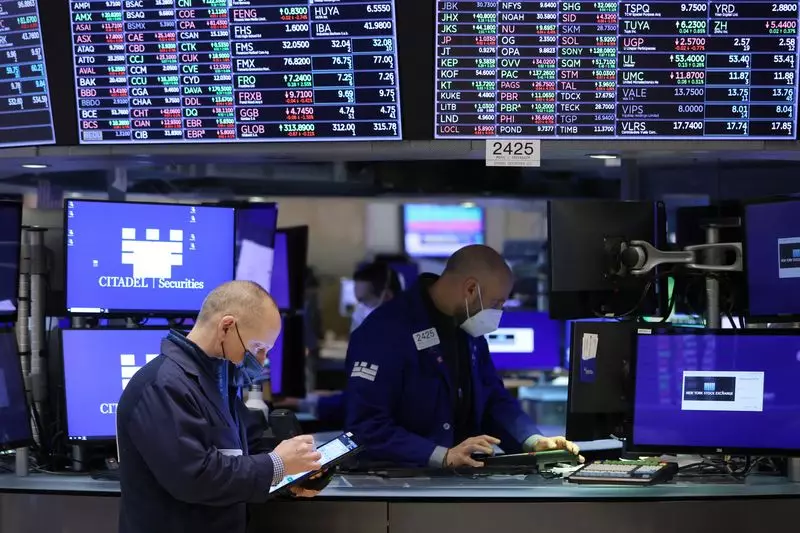The financial landscape recently witnessed a flurry of activity, highlighted by the S&P 500 reaching a historic high before retracting slightly. This movement underscores the complex interplay of corporate earnings reports, economic indicators, and geopolitical events that consistently shape market sentiments. As investors sift through a wealth of data, the duality of optimism and caution mirrors the underlying volatility of the stock market.
In the latest trading sessions, the S&P 500 experienced a slight decline of 0.10% after peaking at an unprecedented 6,128.18. Similarly, the NASDAQ Composite fell by 0.2%, while the Dow Jones Industrial Average settled lower by 58 points, equating to a 0.1% drop. Despite these declines on Friday, all three indices are on the verge of concluding a second consecutive week of gains, illuminating a more extensive uptrend in the market. This rebound comes on the heels of President Trump’s bold statement during the World Economic Forum in Davos, where he called for immediate reductions in interest rates—a move that sent ripples through global markets, inciting both optimism and skepticism.
Amid this backdrop, corporate earnings were a focal point. Verizon Communications stands out, with its stock climbing over 1% bolstered by promising wireless subscriber growth—its strongest in five years. In stark contrast, American Express revealed a substantial fourth-quarter profit surge of 12%, yet its stock plummeted by 2.4%. This discrepancy emphasizes the often irrational nature of stock reactions; factors such as market expectations and future outlook can conflict with positive earnings reports.
Boeing’s recent challenges typify the difficulties facing some corporations. The company’s stock slid by 1.2% as it projected a staggering $4 billion loss, exacerbated by ongoing labor strikes and project-related costs. This development not only highlights operational challenges but reflects the far-reaching implications of corporate governance and strategic foresight in managing investor expectations.
On the flip side, Texas Instruments faced a significant 7% drop after forecasting disappointing first-quarter profits, a reflection of inventory surpluses in its primary automotive and industrial sectors. This situation elucidates the delicate balance firms must strike between production capability and market demand.
Notably, some companies bucked the trend of declines. Twilio’s stock soared by an impressive 21%, driven by robust forward guidance that delighted investors. Such positive announcements can often result in drastic market movements, proving that investor confidence can swing dramatically based on future potential rather than just historical performance.
Another noteworthy development came from Meta, which reached a record high upon announcing ambitious capital expenditure plans totaling between $60 billion and $65 billion for AI infrastructure. This proactive strategy indicates a growing trend where companies prioritize investment in technology and innovation to secure a competitive edge in an ever-evolving marketplace.
The release of the Michigan Consumer Sentiment Index, which dropped to 71.1 in January from 74.0 the previous month, serves as a crucial indicator of economic health. Such declines can signal potential headwinds for consumer spending, particularly in light of the impending Federal Reserve policy-setting meeting. Analysts largely expect the Fed to maintain the status quo on interest rates amidst prevailing economic uncertainties, a sentiment supported by Goldman Sachs’s analysis that inflationary spikes could be transient rather than systemic.
Additionally, notable international developments like the Bank of Japan’s recent 25 basis point rate hike reflect broader trends in monetary policy adjustment as central banks globally grapple with inflationary pressures and economic recovery. This coordinated monetary stance can have cascading effects on investor confidence and market stability.
The current state of the market reflects a complex environment characterized by contrasting fortunes across sectors and indices. Investors are tasked with navigating a landscape shaped by immediate corporate results and the broader economic context. As data continues to fluctuate, and geopolitical developments unfold, the market’s trajectory remains uncertain but laden with opportunity for those equipped to adapt and respond with agility. Understanding these trends is crucial for making informed investment decisions in the face of ongoing volatility.

